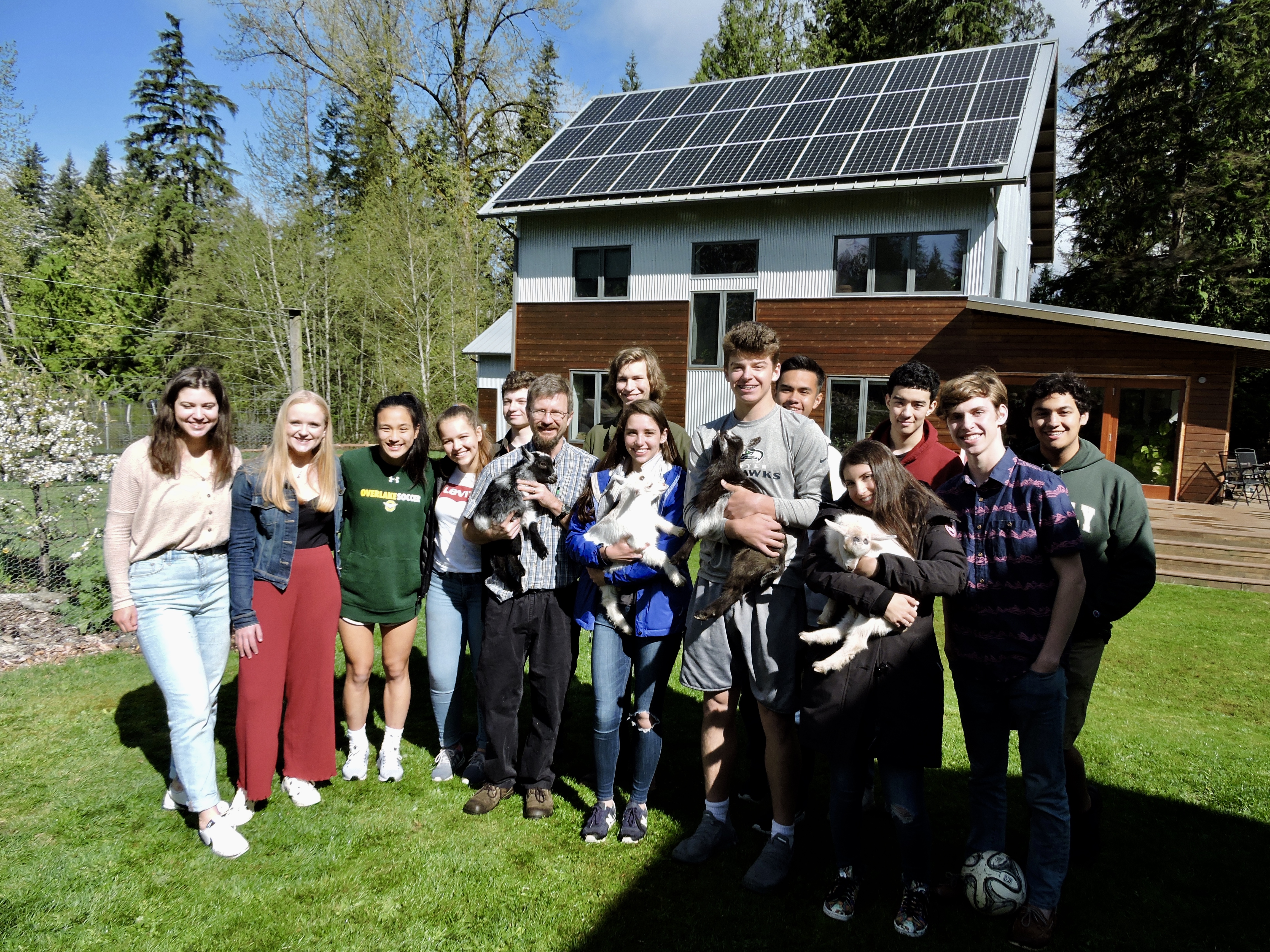- News
AP Environmental Science Students See Green Building Up Close

Gerald Blycker’s AP Environmental Science students took a field trip to their teacher’s home. It’s a net positive energy home that Blycker and his wife have been working on for several years. “Throughout the year, my class has been learning about issues such as climate change, sustainability, food production, organic farming techniques, fossil fuel energy and renewable energy sources,” explains Blycker. “In order to meet the Paris Agreement’s goals of keeping the Earth’s temperature from rising no more than 2 degrees C, the entire planet must reduce its greenhouse gas emissions to zero in the next 30 years. My students have learned that it is indeed possible to do this in theory, but I wanted them to see how it can be put into practice and achieved.”
Blycker’s home is a model of energy efficiency. In fact, his home is so efficient, it produces more energy than he can use. “The 11 kW solar panels on the roof produce 180% of the entire home’s energy use. The extra electricity is enough to power two electric cars driving a total of 20,000 miles/year,” says Blycker. “In general, the solar panels produce more energy than we are using in the summer, so the excess is fed back to the grid and Puget Sound Energy gives us a credit. In the winter, when we are using more energy than the panels can provide, we get the additional power from the grid and we use up our credit.” Blycker says he also gets a production incentive in the state for the next 8 years, so he gets paid 16 cents for every kWh of electricity they produce.
Beyond the solar panels, Blycker’s home is super insulated, with 16-inch walls, triple-pane windows and doors, a ductless air-source heat pump, a heat recovery ventilator, heat pump water heater and dryer, LED lights, and high-efficiency appliances.
After touring Blycker’s home the students had a great conversation on the bus ride back. “We saw lots of new housing development on the drive and we talked about how all of those homes are just being built to code when they could easily be built to higher standards making them net positive energy homes with zero carbon footprint. We talked about how it was more expensive to build to this higher standard initially, but we are saving more money on energy bills than we are spending on the increased loan. Therefore, it is actually cheaper from day one to have a more energy efficient and comfortable home.”
And while most of us aren’t living in a net positive energy home, there are steps we can take today to move in that direction. “You can take immediate small steps to reducing energy consumption by lowering the thermostat at night and when people are not at home,” says Blycker. “Reduce the water heater temperature to 120 F. Take shorter showers. Wash clothes in warm or cold water. Hang clothes to dry outside in the summer. Carpool and take public transportation. Buy more energy efficient vehicles like hybrids or electric cars.”
Blycker's home will be featured in this year’s NW Green Home Tour on Saturday, May 28th. This free tour includes 30 homes in Seattle and the eastside. Blycker’s home is listed here on E6. He welcomes the Overlake community to come see what he’s done in home building. His home is located at 13404 Batten Road NE, Duvall, WA 98019.
